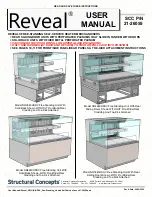
MGL Avionics iEFIS Lite
Getting started guide
Connect EFIS Power cable to EFIS panel and supply 12V and ground to supply input via
avionics master switch.
Connect the “keep alive (KA)” wire permanently to the aircraft b12V terminal.
This
connection should remain at all times.
Connect devices such as RDACs, AHRS and compass sensors to the CAN interface bus. See
installation manual for details. Do not forget to fit CAN bus termination resistors.
The EFIS panel should now be alive.
Press the menu button, select “system setup” -> “Standard system selections”.
Select your desired screen layout, engine and fuel monitoring options. You will complete the
engine and fuel individual setups in the “Engine and fuel related setup menus”.
Connect pitot and static ports as needed. After final mounting of the panel allow the panel to
warm up for 10 minutes and then perform the “zero ASI and AOA sensors” procedure in the
“Internal and external sensor setup” menu (under system setup).
Verify correct airspeed indication before first flight. The minimum airspeed for indication is 27
knots.
Install the navigation database, maps and terrain data using the “Install tasks menu”.
Install the GPS antenna and connect it to the panel You should have a valid position typically
in under one minute (Note: GPS reception may not be possible inside a hangar).
Please calibrate the touch screen to conform to your fingers anatomy and desired touch
position (relative to the pressure point of your finger). The easiest way to do this is to press
the second right rotary control towards the panel (past the detent), hold this and then switch
on the panel. It will start straight in touch screen calibration mode. Calibration is quick and
requires only 5 reference points.
Please refer to user and installation manuals for all devices used. The latest versions of these
manuals are available for download at
Please familiarize yourself with the operation of the EFIS and the many setups in the system.
Most of these setups will be done only once to set the system up to your needs.
Please ensure that all systems are working correctly, that installation has been performed to
required aircraft standards and that the pilot is familiar with the EFIS operation and is able to
use it correctly as reference for safe flight, including emergency procedures for partial or full
systems failure.
Ensure that adequate, high quality electrical power supply is available to the EFIS at all times,











